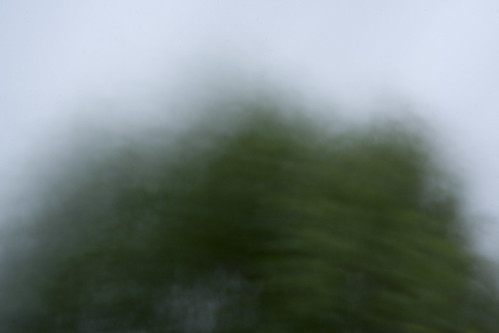This is part II in a series of how to experiment with pinhole photography.
Ok, so now that you’ve got your gear ready to go out and shoot your pinhole camera (don’t forget your tripod!) it’s time to make the exposures. Basically, you have two choices when it comes to exposure time. You can:
- Carefully calculate the proper exposure time based upon the size of the hole, reflectivity of the subject matter, the specific lighting conditions, and the ISO of your paper/film/camera sensor, or
- You can guess.
Now, option one, while sounding quite scientific does not always guarantee results. It can be hard to calculate how long to expose and certain things, like clouds moving between you and the sun, make it hard to precisely calculate how long your exposure time will be. You can use a hand-held light meter here, or you can sort of “guesstimate” based upon how sunny you think it is and how long your last exposure was, and how bright your subject is.
The “just guess” option, maybe doesn’t sound like it would produce good results at first, but it can, because of the long exposure times pinhole photography affords you. If it helps, think of it this way. Imagine that your camera may want 30 seconds of exposure time in a specific situation. So, anything between 15 seconds and 1 minute would become properly exposed, right? If you think about it, that’s a lot of “wiggle room” and can provide you with a nice cushion to proper exposure. Those opting for the dSLR route might want to seriously consider the guess factor, because it’s easier to do and you can rely upon that little preview button for help.
Whatever way you do it, be it by guess, calculation, or a combination of the two, proper exposure is sort of a luxury when dealing with pinhole photography. Part of the appeal of using the pinhole camera is that it’s a stripped down version of things. There are no light meters, there are no electronics, no sensitive equipment that’s been carefully measured. It’s just sort of you, your Quaker Oats box, a sewing needle and some paper out in the wilds. It helps if you think about exposure that way too. If you want to get exact, use a “real” camera. Think of the pinhole as a sort of exercise in experimentation. It’s a trial and error technique and you can’t always knock out the “error” part of it, so you might as well enjoy your blunders (yes, there will be some.)
Having said that, on the other side of that equation, pinhole imagery is some of the most beautiful work out there. It’s evocative, it’s unique, it’s different, it’s way cool without even trying. It’s what all the cool kids shoot. All that and, well, it’s kind of fun to try too.
One final note about working with the cameras that might be applicable to your situation. There are some pinhole cameras out there that allow you to more easily change out the paper or film once you make the exposure. The Holgas, for example, work as sort of “real” cameras in that they have a little knob to allow you to advance film. This can be a real handy feature to have if you are working with paper negatives and do not have a darkroom immediately handy. In the days of old, a lot of photographers were into caving, because caves afforded them the darkness and cold water necessary to develop film (back in those days, film could not keep very long.) If you can’t shoot a paper negative, run into the darkroom, develop, and repeat, you may want to seriously consider a more film-based option (such as the Holga or a camera that can swap out backs, one of the “fancier” pinhole cameras, if you will) or go the digital route, just for convenience.
Whatever you choose, I hope that you give it a try. Pinhole photography is a very interesting technique. It’s not expensive, it can produce wonderful images, and it teaches us a lot about exposure, which can be hard to learn if you’ve never had the luxury of doing your own darkroom work.
Until next time…

